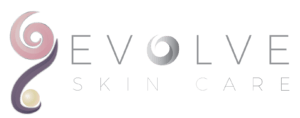Over the counter acne treatment products typically include acne or spot treatments, cleansers and washes, moisturizers, lotions, pads and wipes, masks and strips, shaving creams, and toners and astringents. So how do you know what over the counter acne treatment you should use? Heres some simple, yet powerful information that most folks unfortunately dont take the time to find out. Benzoyl Peroxide the Bacteria Slayer Benzoyl Peroxide (BP) in over the counter acne treatment products: -works best for moderate to moderately severe acne, -deeply penetrates into the skin to kill tough bacteria, -is best used preventatively, -dries and exfoliating the skin, -works faster than prescription antibiotics, and -doesnt allow bacteria to build resistance like prescription antibiotics. However, BP is a very harsh chemical. It causes redness, dryness, and scaling. BP can also lighten fabric colors. You can find a cheap tube of BP in any drugstore at 2.5% which will work wonders over a few weeks time. Salicylic Acid the Surface Slougher Salicylic Acid or beta hydroxyl acid (BHA) works best for mild acne and sensitive skin, as a cleanser ingredient to slough surface skin cells, and as an agent that prepares the skin for other acne treatments. It breaks down a protein that holds the skin cells together. Over time, it exfoliates old skin and allows new healthy skin to surface. It loosens whiteheads and blackheads and helps expel them. Salicylic acid is fairly mild. It does not reach down deep into the skin follicles like benzoyl peroxide. It can take up to 3 months to loosen smaller whiteheads and blackheads. However salicylic acid works well if you use it over a consistent and long period of time. Some side effects of salicylic acid include some skin peeling, dryness, and irritation when used at concentrations of 2% or greater. Possible adverse effects include salicylate toxicity, toxic inner ear damage, and hypersensitivity. Also risk of increases in skin sensitivity to sunlight. Look for an over the counter acne treatment cleanser with concentrations of 2% salicylic acid, in an acid base with a pH of between 3 and 4. Alpha Hydroxy Acids (AHA) Alpha Hydroxy Acids work best for all types of skin, as a mild or strong cleanser, and for healing and preventing acne. AHAs are natural acids which come from fruits, milk sugars, and plants. Glycolic and lactic acids are the most frequently used in over the counter acne treatment products, and are the most well researched AHAs to date. AHA’s gently peel away the uppermost layer of dead skin cells. They make way for the newer skin beneath. Look for a product with a glycolic acid concentration between 8 and 10% and no other active ingredients. You should see results in the texture of your skin within a few weeks. Side effects include more susceptibility to sunlight and minor skin irritation or blisters and burns. Fewer AHA products have FDA approval. Retinol Retinol is the chemical name for vitamin A which is the active ingredient in the prescription drug Retin-A, the favored topical prescription acne treatment. Retinol works best in high concentrations and when packaged stably. It hasnt really proven its effectiveness for acne. Sulfur and Resorcinol Basically, sulfur kills acne bacteria. Resorcinol helps shed the outer layer of skin, and increases the effect of sulfur. However, experts arent entirely sure how it works in combination with sulfur. Resorcinol alone is not an effective acne treatment. It can be very irritating to some patients. For those who cant use BP or Retin-A, sulfur may be a good alternative. The side effects are minor: dryness and unpleasant odour. Its not recommended for pregnant women unless their doctor prescribes resorcinol. There are no major known adverse effects in resorcinols combination with sulfur. Everyone is different For maximum effectiveness, find a cleanser containing salicylic acid or glycolic acid, a leave-on benzoyl product, and a moisturizer you wear overtop. As a general rule of thumb, OTC drugs should work within 6 to 8 weeks. If they dont work within 10 weeks and even promote breakouts, see a dermatologist. Now you have enough knowledge to look for effective skin products, as well as how to use them to use them the right way. About The Author
Yvette Chau is a freelance writer based in Edmonton, Canada specializing in the area of skincare and acne treatment. Undergoing failed treatments herself before finding a solution for her own skin problems, she offers information and advice to others on http://www.your-best-acne.treatment.com/.
Follow Us On
Categories
